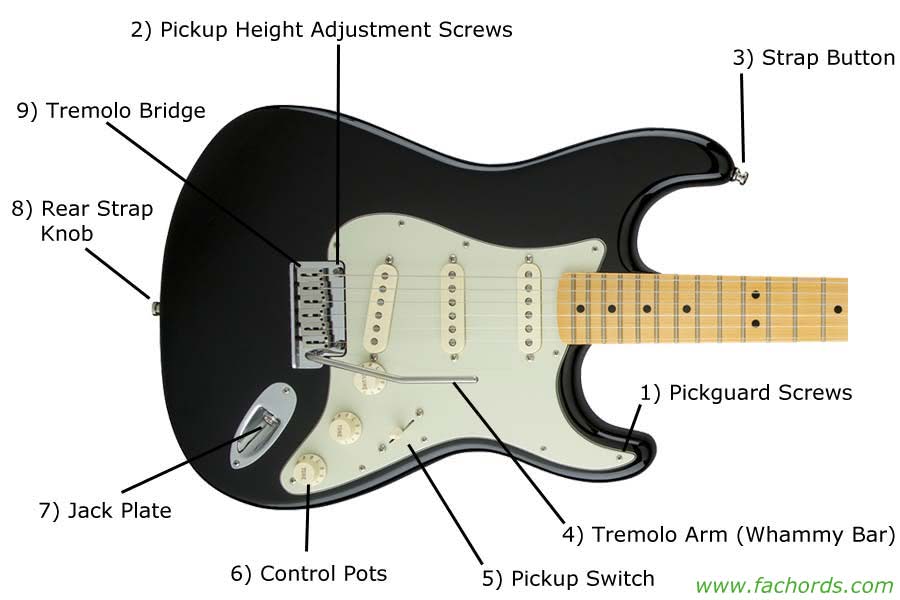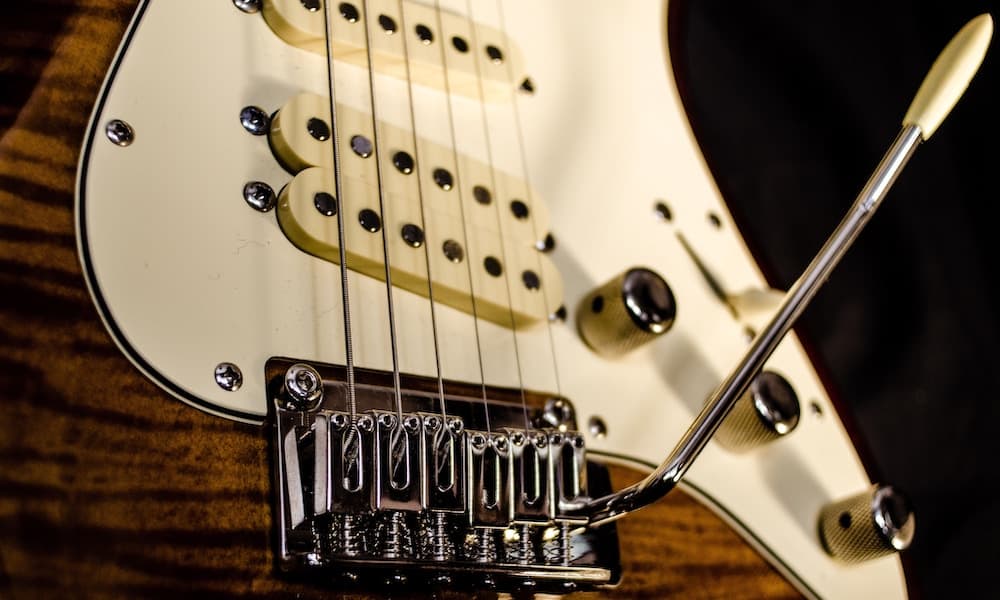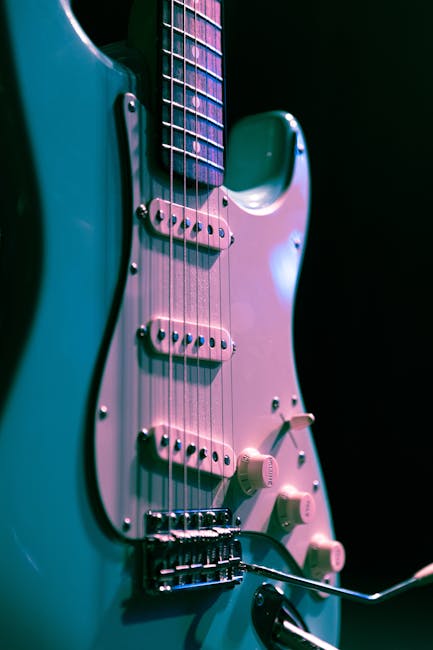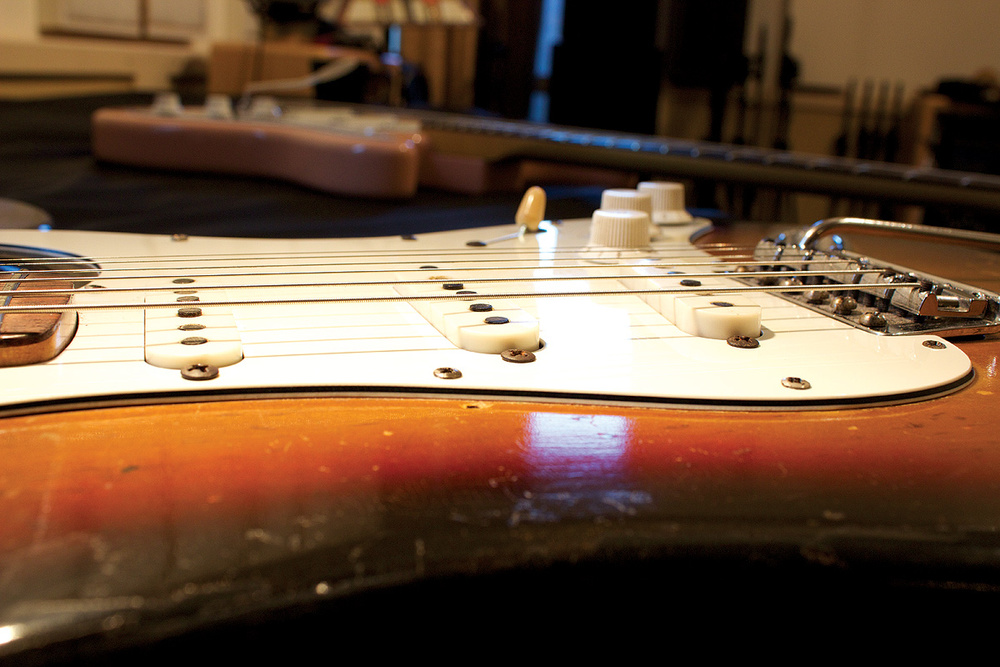Strap in, fellow guitar enthusiasts, because we’re about to dive deep into the electrifying world of guitar pickups. Yes, those tiny magnets hidden beneath the strings that have the power to make or break your tone faster than you can say “more cowbell.” Get ready to unlock the secret to ultimate guitar tone, because we’re about to school you on how to master those pickups like a rockstar. Let’s get ready to rock and roll, baby!
Contents
- 1 Understanding Guitar Pickups: Types and Characteristics
- 2 Diving into Single-Coil and Humbucker Differences
- 3 Achieving Tone Perfection: Optimizing Your Pickup Configuration
- 4 Exploring Active vs Passive Pickups: A Sonic Showdown
- 5 Harnessing the Power of Pickup Placement and Adjustment
- 6 Fine-Tuning Your Sound: The Role of Pickup Materials
- 7 The Art of Mixing and Matching Pickups for Unique Tones
- 8 FAQs
- 9 Rock On!
Understanding Guitar Pickups: Types and Characteristics
So you’ve bought a snazzy new guitar and now it’s time to dive into the wonderful world of pickups. But wait, what even are pickups? Don’t worry, we’ve got you covered!
There are a few main types of pickups to choose from, each with their own unique characteristics and quirks. From single-coil pickups that twang like a country song to humbuckers that are thicker than a bowl of oatmeal, there’s something for everyone!
Single-coil pickups are like the annoying little siblings of the pickup world – they can be noisy and unpredictable, but can also deliver that classic vintage tone that is oh so sweet. On the other hand, humbuckers are like the responsible older siblings – they might not be as flashy, but they sure do get the job done with their fat, chunky sound.
So whether you’re a twangy twanger or a chunky chugger, there’s a pickup out there for you. Just remember, the world of guitar pickups is a wild and wonderful place, so buckle up and enjoy the ride!

Diving into Single-Coil and Humbucker Differences
So you’re looking to explore the wonderful world of guitar pickups, eh? Well, buckle up because we’re about to dive headfirst into the quirky realm of single-coil and humbucker pickups.
Let’s start with the OG of the pickup world – the single-coil. These bad boys are like the skinny jeans of the guitar pickup world - they’re bright, twangy, and full of character. They’ll give you that classic, vintage sound that’ll make you feel like you’re grooving in the 60s. Plus, they look pretty darn cool with their sleek, slim design.
Now, onto their beefier cousin - the humbucker. These babies are like the linebacker of pickups – they’re chunky, powerful, and ready to rock your socks off. They’re great for those heavy riffs and fat, juicy tones that’ll make your guitar scream like a banshee. Plus, they’ve got that sweet, sweet noise-cancelling technology that’ll make sure your sound stays clean and pristine.
So, whether you’re a single-coil fanboy or a humbucker aficionado, each pickup has its own unique charm and sound. Why not mix and match to create your own signature tone? Who knows, maybe you’ll stumble upon the next big guitar revolution. The possibilities are endless, my friend.

Achieving Tone Perfection: Optimizing Your Pickup Configuration
So, you’ve got your guitar, your amp, and your determination to achieve tone perfection – what’s next? Optimizing your pickup configuration, of course! Because let’s face it, no one wants to sound like a cat being strangled when they play.
First things first, make sure you’re familiar with the different types of pickups available. From single-coils to humbuckers, each has its own unique sound that can drastically affect your tone. Experiment with different combinations to find the perfect balance for your playing style.
Don’t be afraid to get a little technical – adjusting the height of your pickups can make a world of difference. Play around with the spacing between the strings and the pickups to find that sweet spot where your notes sing with clarity and power.
And remember, tone is subjective – what works for one player may not work for another. Trust your ears and keep experimenting until you find that magical combination that makes your music come alive. Happy tweaking!
Exploring Active vs Passive Pickups: A Sonic Showdown
So, you’ve finally decided to delve into the world of pickups, huh? Buckle up, buttercup, because we’re about to embark on a wild ride through the sonic landscape of active and passive pickups.
Let’s start with the active pickups – they’re like the Energizer Bunny on steroids. These bad boys pack a punch with their built-in preamps that boost your signal and give you that extra oomph. It’s like having a personal trainer for your guitar, pushing you to hit those high notes with ease.
On the other hand, passive pickups are more like the wise old sage of the guitar world. They may not have all the bells and whistles of their active counterparts, but they provide a warm, vintage tone that can make your soul sing. They’re like a cozy cup of tea on a rainy day – comforting and familiar.
So, which pickup reigns supreme in this sonic showdown? It’s like trying to choose between chocolate or vanilla - both are delicious in their own way. Whether you’re a shredder looking to melt faces with your killer solos or a laid-back strummer wanting to serenade someone special, the choice between active and passive pickups ultimately comes down to personal preference. So, go forth, brave adventurer, and let your guitar journey begin!

Harnessing the Power of Pickup Placement and Adjustment
So you’ve got your shiny new guitar and you’re ready to rock out like never before. But wait, have you considered the power of pickup placement and adjustment? That’s right, this seemingly small detail can make a world of difference in your sound. Let’s dive into how you can harness the power of pickup placement and adjustment to take your playing to the next level.
First things first, make sure your pickups are adjusted properly. This simple step can make a huge impact on the tone of your guitar. Use a screwdriver to adjust the height of your pickups until you find the sweet spot. Remember, the closer the pickup is to the strings, the louder and more aggressive the sound will be. Experiment with different heights until you find the perfect balance for your playing style.
Next, consider the placement of your pickups. Are they in the right position to capture the full range of tones your guitar is capable of? Play around with moving the pickups closer to the bridge or neck to see how it affects your sound. You may be surprised at the difference it can make.
Lastly, don’t be afraid to get creative with your pickup placement and adjustment. Try unconventional positions or heights to see how it changes your sound. And remember, there are no right or wrong answers when it comes to finding your unique tone. So grab that screwdriver and get tweaking – you’ll be amazed at the power of pickup placement and adjustment!
Fine-Tuning Your Sound: The Role of Pickup Materials
When it comes to fine-tuning your sound, the material of your pickups plays a crucial role. Each material brings its own unique characteristics to the table, so it’s important to know what you’re working with. Here’s a breakdown of some common pickup materials:
- Alnico: Known for its warm, vintage tone, alnico pickups are a popular choice among guitarists looking to capture that classic sound. They offer a sweet, smooth sound that’s perfect for blues, rock, and jazz.
- Ceramic: If you’re looking for a more aggressive, modern sound, ceramic pickups might be the way to go. They provide a tight, focused tone with plenty of power and clarity, making them a great choice for heavy metal and hard rock.
- Neodymium: The new kid on the block, neodymium pickups are known for their high output and exceptional clarity. They deliver a crisp, articulate sound that works well for genres that require precise articulation, such as fusion and progressive metal.
Ultimately, the best pickup material for you depends on your playing style and the sound you’re trying to achieve. Experimenting with different materials can help you find the perfect tone for your music, so don’t be afraid to mix and match until you find the right combination. After all, tone is a journey, not a destination!
The Art of Mixing and Matching Pickups for Unique Tones
So, you’ve got an itch for some unique tones huh? Well, you’ve come to the right place! Mixing and matching pickups is like being a mad scientist in a lab - except instead of creating monsters, you’re crafting killer sounds that will make heads turn.
Picture this: slap a fat humbucker in the bridge for some dirty lows, throw in a single-coil in the middle for those sparkly highs, and maybe top it off with a P90 in the neck for some sweet mids. The possibilities are endless! It’s like a musical Frankenstein, but in a good way.
Don’t be afraid to think outside the box either. Who says you can’t mix different brands or types of pickups? Experimenting is part of the fun. Just remember, there’s no right or wrong when it comes to tone – it’s all about what sounds good to you.
So, grab your soldering iron, a cold beverage, and let’s get to work! With a little creativity and some trial and error, you’ll be dialing in killer tones that are as unique as you are. And who knows, maybe you’ll stumble upon your own signature sound along the way.
FAQs
What are the different types of guitar pickups and how do they affect tone?
Well, my friend, there are three main types of pickups: single-coil, humbucker, and P90. Single-coil pickups give you that classic twangy sound, humbuckers are great for fat, juicy tones, and P90s fall somewhere in between. Choose wisely!
How can I adjust the height of my pickups for optimal tone?
Ah, adjusting pickup height is like finding the perfect pizza toppings – it’s all about personal preference. Just play around with it until your guitar sounds like music to your ears. You’ll know it when you hear it.
What is the difference between active and passive pickups?
Active pickups are like the Energizer Bunny – they’re powered by a battery and have a higher output, giving you more oomph in your sound. Passive pickups, on the other hand, are like grandma’s homemade cookies – they rely on magnets and wire to do the job. Both have their pros and cons, so pick your poison!
Can I mix and match different pickups on my guitar?
Oh, the age-old question of whether you can mix stripes and plaids. Mixing and matching pickups is like trying to fit a square peg in a round hole – sure, you can do it, but it might not always sound right. Proceed with caution, my friend.
How can I reduce noise and interference from my pickups?
Ah, the pesky hum and buzz of pickup interference – the bane of every guitarist’s existence. To combat this, you can shield your guitar’s cavities, use noiseless pickups, or just move away from that pesky fluorescent light. Keep calm and rock on!
Rock On!
Congratulations on making it through this ultimate tone guide for mastering guitar pickups! Now that you’re armed with all this knowledge, go forth and crank up the volume on your guitar. Experiment with different pickups, play around with your tone settings, and most importantly, have fun making some sweet music. Remember, the key to mastering guitar pickups is not just about technical skill, but also about the passion and love you put into your playing. So keep shredding, rocking out, and creating sonic magic!



